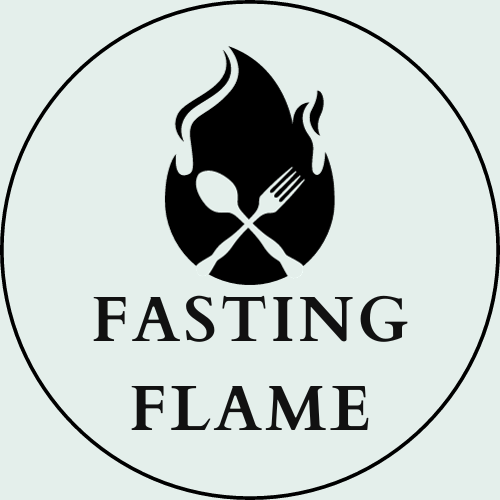Dry fasting and water fasting are two popular methods of fasting that have been gaining traction in recent years. Both methods involve abstaining from food, but the key difference is that dry fasting restricts both food and liquid intake, while water fasting allows for water consumption.
Dry fasting is believed to have several benefits, including weight loss, improved immune function, and cell regeneration. However, it also has potential side effects like dehydration, hunger, and inflammation. On the other hand, water fasting is known to help flush toxins out of the body, reset the digestive system, and improve overall health.
If you’re considering trying out either of these fasting methods, it’s important to do your research and consult with a healthcare professional to determine which one is right for you. In this article, we’ll take a closer look at the differences between dry fasting and water fasting, their potential benefits and risks, and provide tips for getting started with either method.
Fundamentals of Dry Fasting

Definition and Principles
Dry fasting is a type of fasting that restricts both food and liquid intake. It is also known as absolute fasting. Unlike most other types of fasting, dry fasting does not allow any fluids, including water, tea, and broth. Dry fasting can be approached in different ways, such as intermittent fasting or prolonged fasting. During intermittent fasting, you can choose a fasting cycle that demarcates the eating and fasting window. On the other hand, prolonged fasting involves abstaining from food and water for an extended period.
While dry fasting, your body uses up its stored energy and starts breaking down fat cells to produce energy. As a result, you may experience weight loss, improved metabolism, and increased fat burning. Dry fasting can also help reduce inflammation, strengthen your immune system, and improve your digestive health. However, it is essential to note that dry fasting can be dangerous if not done correctly. It is crucial to consult a healthcare professional before trying dry fasting.
Historical Background
Dry fasting has been practiced for centuries, mainly for religious and spiritual purposes. Many cultures and religions, including Islam, Judaism, and Christianity, have incorporated dry fasting into their religious practices. In ancient times, dry fasting was also used as a natural remedy for various health conditions. Hippocrates, the father of modern medicine, recommended fasting as a way to heal the body and prevent disease.
In recent times, dry fasting has gained popularity as a weight loss and detoxification method. Many people use dry fasting as a way to jumpstart their weight loss journey or to detoxify their bodies. However, it is essential to note that dry fasting is not a sustainable weight loss method and should not be used as a long-term solution. It is crucial to combine dry fasting with a healthy diet and regular exercise for long-term weight loss and overall health benefits.
Fundamentals of Water Fasting

Definition and Principles
Water fasting is a type of fasting where you consume only water for a certain period of time. During a water fast, you do not consume any food or drinks other than water. This type of fasting is often used for religious or spiritual reasons, but it has also gained popularity for its potential health benefits.
Water fasting is based on the principle of autophagy, which is the body’s natural process of cellular self-cleaning and recycling. During a water fast, your body is forced to use stored energy to fuel its functions, which leads to the breakdown of damaged and diseased cells. This process helps to regenerate new cells and tissues, leading to improved health and longevity.
Historical Background
Water fasting has been practiced for thousands of years for religious and spiritual reasons. The ancient Greeks, Egyptians, and Romans all practiced fasting for health and religious purposes. In modern times, water fasting has gained popularity as a way to detoxify the body and improve overall health.
In the early 20th century, water fasting was used as a treatment for various diseases, including hypertension, diabetes, and obesity. Today, water fasting is still used as a therapeutic tool in some medical settings, but it is also commonly used by people seeking to improve their health and well-being.
Water fasting should only be done under the guidance of a healthcare professional, as it can be dangerous if not done properly. It is important to prepare your body before starting a water fast and to break the fast slowly to avoid any negative side effects.
Dry Fasting and Water Fasting Differences

Health Benefits
Both dry fasting and water fasting have been shown to offer numerous health benefits. Dry fasting is believed to be more effective in weight loss due to the body’s need to break down fat stores for energy. It can also improve insulin sensitivity and reduce inflammation in the body. On the other hand, water fasting has been shown to improve cardiovascular health, lower blood pressure, and reduce the risk of chronic diseases such as diabetes and cancer. It can also boost the immune system and promote cellular repair.
Risks and Challenges
While both types of fasting have their benefits, they also come with risks and challenges. Dry fasting can be dangerous if not done correctly, as it can lead to dehydration and electrolyte imbalances. It is also more challenging to sustain for longer periods of time. Water fasting, on the other hand, can lead to nutrient deficiencies and muscle loss if not done correctly. It can also cause headaches, fatigue, and dizziness during the initial stages.
In conclusion, both dry fasting and water fasting have their benefits and risks. It is important to consult with a healthcare professional before starting any fasting regimen and to ensure that it is done correctly and safely.
Methodology and Practice

Dry Fasting Procedures
To start a dry fast, you must abstain from both food and water for a specific period of time. There are different types of dry fasting, such as soft dry fasting, where you can still brush your teeth and take a shower, and hard dry fasting, where you avoid any contact with water. During a dry fast, your body relies on the water stored in your body’s fat cells, which can lead to rapid weight loss. However, dry fasting can be dangerous if not done correctly, so it is essential to consult a doctor before attempting it.
Water Fasting Procedures
Water fasting involves abstaining from food and only consuming water for a specific period of time. You can drink as much water as you want, but you must avoid any other liquids or food. Some people choose to add lemon or herbal tea to their water to make it more palatable. Water fasting can lead to weight loss, improved digestion, and reduced inflammation. However, it can also be dangerous if done for an extended period, so it is essential to consult a doctor before attempting it.
Overall, both dry fasting and water fasting can be effective methods for weight loss and improving overall health. However, it is crucial to consult a doctor before attempting either method and to follow proper procedures to ensure safety and effectiveness.
Scientific Evidence

Dry fasting and water fasting are two popular methods of fasting used for various health benefits. While both have their own advantages, it is essential to understand the scientific evidence behind them to make an informed decision about which one to choose.
Research on Dry Fasting
Dry fasting is a type of fasting where you abstain from both food and water for a specific period. According to Healthline, dry fasting has been found to have several benefits, including weight loss, improved insulin sensitivity, and autophagy. Autophagy is a process by which your body breaks down and recycles old or damaged cells, which can help reduce the risk of chronic diseases.
A study published in the Journal of Nutritional Health and Food Science found that dry fasting for 24 hours can improve blood glucose levels and lipid profiles in healthy individuals. However, it is essential to note that dry fasting can be dangerous if not done correctly. It is crucial to consult with a healthcare professional before attempting dry fasting to avoid any potential risks.
Research on Water Fasting
Water fasting is a type of fasting where you consume only water for a specific period. According to the National Institute on Aging, water fasting has been found to have several health benefits, including improved insulin sensitivity, weight loss, and reduced inflammation.
A study published in the International Journal of Preventive Medicine found that water fasting for ten days can improve cardiovascular risk factors in healthy individuals. It is essential to note that water fasting can be challenging, and it is crucial to consult with a healthcare professional before attempting water fasting to avoid any potential risks.
In conclusion, both dry fasting and water fasting have their own advantages and disadvantages. It is essential to understand the scientific evidence behind them and consult with a healthcare professional before attempting any type of fasting to avoid any potential risks.
Personal Considerations

When considering dry fasting versus water fasting, there are some personal considerations you should take into account to determine which method is best for you.
Who Should Avoid
If you are pregnant, nursing, under 18 years of age, or have a history of eating disorders, it is recommended that you avoid dry fasting altogether. Dry fasting can be dangerous for people who are dehydrated, have kidney problems, or are on certain medications. If you have any health conditions or concerns, it is important to consult with a healthcare professional before attempting either type of fasting.
Preparation and Safety Tips
Before starting a dry or water fast, it is important to prepare your body by gradually reducing your food intake. This can help prevent side effects such as headaches, dizziness, and fatigue. During the fast, it is essential to stay hydrated if you are doing a water fast, and to avoid overexertion or strenuous exercise. If you are doing a dry fast, it is important to listen to your body and break the fast if you experience any severe symptoms such as extreme thirst, dizziness, or confusion.
To ensure your safety during a fast, it is recommended that you have a support system in place, such as a friend or family member who can check in on you and provide assistance if needed. It is also important to break your fast gradually, starting with small amounts of easily digestible foods such as fruits and vegetables.
Remember to always listen to your body and consult with a healthcare professional before attempting any type of fasting. With proper preparation and safety measures, both dry and water fasting can be safe and effective ways to improve your health and well-being.


Leave a Reply